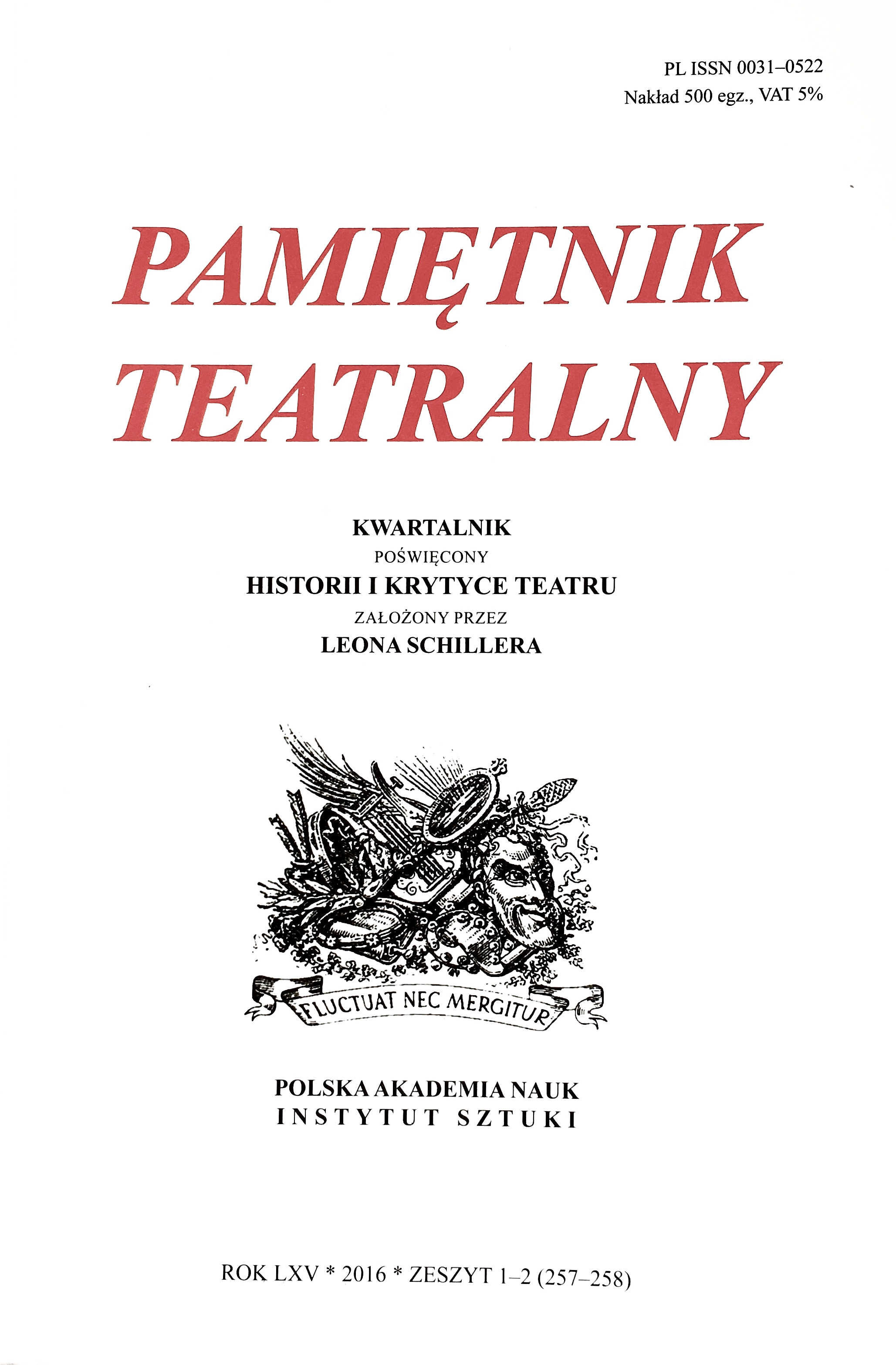Taneczne wcielenie sentymentalizmu na przykładzie baletu Córka źle strzeżona
Dance Embodiment of Sentimentalism in the Case of The Wayward Daughter Ballet
Author(s): Agnieszka NarewskaSubject(s): Theatre, Dance, Performing Arts
Published by: Instytut Sztuki Polskiej Akademii Nauk
Keywords: ballet art;sentimentalism;ballet history
Summary/Abstract: The article presents an analysis of The Wayward Daughter, famed for being the most enduring piece in the ballet repertory all over the world. Sentimentalism, which influenced ballet as well, leaving its mark on the form and content of this art, contributed also to the creation of The Wayward Daughter in 1789. The context for this study of The Wayward Daughter by Jean Dauberval (the ballet’s originator and first choreographer) is provided by aesthetic, philosophical and cultural views and assumptions of great eighteenth-century thinkers (e.g. Jean-Jacques Rousseau and Denis Diderot). Their ideas had become foundations for the modern art of ballet, which had also been heavily influenced by one of the greatest reformers of the art of dance, Jean Georges Noverre. His student, Dauberval, using the rules developed by his Noverre, created the comic ballet and broke the monopoly of tragic ballets in vogue at the time. Thanks to its fast-paced action, somewhat naïve yet funny plot and numerous charming choreographic sequences, The Wayward Daughter is entertaining even for today’s audiences. Apart from analysing how the premises of sentimentalism apply to the form and content of a ballet show, the article discusses one of the most famous 20th-century choreographies for the ballet, devised by Frederick Ashton, which is performed by many ballet companies around the world to this day.
Journal: Pamiętnik Teatralny
- Issue Year: 257/2016
- Issue No: 1-2
- Page Range: 209-224
- Page Count: 16
- Language: Polish

